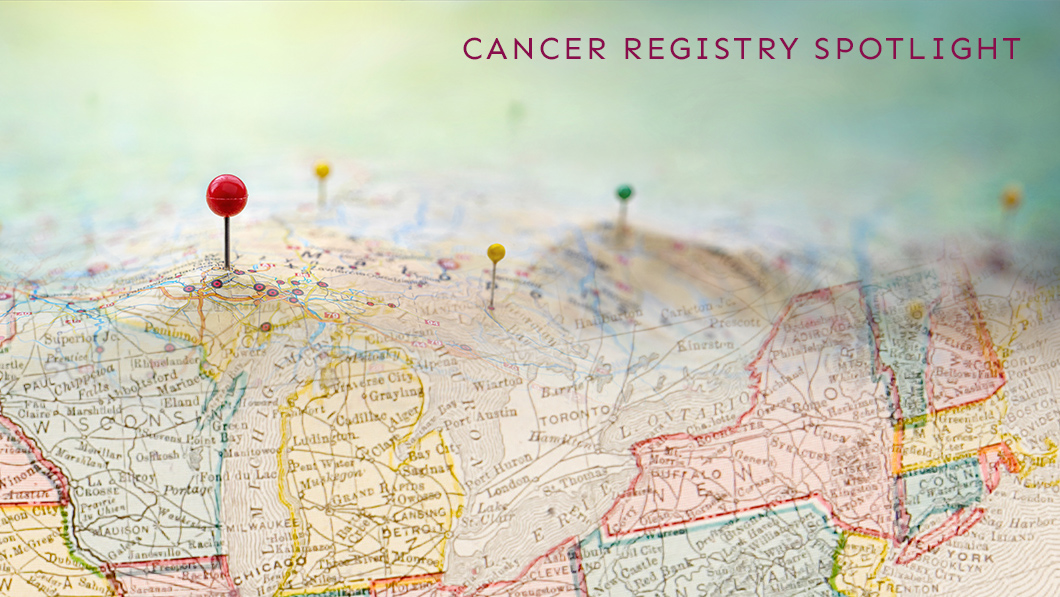Michigan Cancer Surveillance System: LexisNexis Linkage to Improve SSN and Vital Status Information

A spotlight on the Michigan Cancer Surveillance Program
Spotlight on Registries is a new feature that highlights a registry’s special activities or achievements. The Narrative spotlights the Michigan Cancer Surveillance Program’s 2021 NPCR Success Story, which describes the successful linkage between their registry database and the LexisNexis database in order to update several demographic data items. Georgetta “Jetty” Alverson from the Michigan Cancer Registry and lead author on the Success Story spoke with the Narrative recently about their experience.
Narrative: What do you think was your greatest challenge in implementing this new procedure for updating SSN and related patient demographics?
Ms. Alverson:
- The amount of time involved to review the LexisNexis linkage results and determine which instances of the results should be updated in the registry database.
- Updating the patient’s missing SSN with a known SSN was not as labor-intensive as updating the patient’s name and/or demographics.
- Manual review of the file results for best patient information for name and demographics was time consuming. Typos could easily be spotted, and scripts were written for auto-updating the registry database. Manual review was needed when there was a difference in first and/or last name. If the patient was alive in the registry database but LexisNexis indicated the patient was now deceased, the patient’s name was updated based on the LexisNexis results.
- Middle name was updated with the LexisNexis linkage result if the patient’s middle name was missing and/or if middle initial was reported instead of the patient’s middle name.
- Date of Last Contact was updated when the patient’s vital status was alive in the registry database but identified as deceased in the LexisNexis results.
Narrative: What do you think was your greatest success in this implementation?
Ms. Alverson:
- MCSP saw an increase in the annual number of cases reported to the registry with missing SSN and/or invalid/masked SSN reported by Michigan reporting facilities. This is an issue that goes beyond the edits that need to be performed on a regular basis. Therefore, we needed to identify changes in facility reporting of SSN.
- MCSP’s state-specific reporting requirement for reporting the patient’s full SSN requires that facility follow-back be conducted in attempt to obtain it if it is not readily available.
- The registrar/facility should determine if the facility collects the patient’s SSN and if so, if the reason the registrar does not have access to the patient’s SSN is due to a user access rights issue. If user access is needed, the registrar should contact the applicable facility admin/IT staff to request user access.
- If the facility no longer collects the patient’s SSN, it is recommended that the registrar (facility cancer registry) communicate this state-specific reporting requirement to the applicable administrative staff at the facility.
- If the patient’s SSN is not collected or not available, facility follow-back with applicable physician(s) is required by MCSP.
- To sustain success, MCSP created a new state-specific data item, MI100 Reason SocSoc Unknown beginning with v22 (diagnosis year 2022 cases and forward). This state-specific data item serves to act as a reminder to facilities that MCSP requires the patient’s SSN and of MCSP’s state-specific reporting requirement that facility follow-back be conducted in attempts to collect the patient’s SSN. Use of this state-specific data item is required (2022 cases and forward) if the patient’s SSN is reported as unknown.
Narrative: Do you have anything else you would like to share with the NAACCR community as part of this article on your Success Story experience?
Ms. Alverson: MCSP cancer registry staff has been using LexisNexis on a regular basis for approved research studies/linkages and patient look-up for SSN when reported as unknown, invalid, or masked. Regular use of LexisNexis for missing SSN is what prompted the quality assurance review to identify the reason for the increase in the number of cases with missing SSN and for registry batch look-up of cases in the registry database to determine if the SSN could be identified.
Learn more by reading the original 2021 NPCR Success Story.
What to Read Next
New Edits Promote Enhanced Quality
The NAACCR Edits Work Group has developed a new group of edits for central registry use, identified as QC_Chk (quality…




